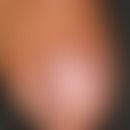Hierfür ist eine Anmeldung erforderlich. Bitte registrieren Sie sich bei uns oder melden Sie sich mit Ihren Zugangsdaten an.
Synonym(s)
laron syndrome; Laron type dwarfism; primary GH resistance syndrome; primary growth hormone insensitivity
HistoryThis section has been translated automatically.
Laron et al., 1966
DefinitionThis section has been translated automatically.
Disturbance of motor growth with muscle weakness, pubertas tarda, facial dysmorphia, tooth development disorders, hip dysplasia and hypotrichosis.
You might also be interested in
Occurrence/EpidemiologyThis section has been translated automatically.
Rarely. Worldwide, 200-300 cases have been described, mostly in patients of Semitic ethnicity. Commonly occurring in families with kosanguine compounds.
EtiopathogenesisThis section has been translated automatically.
Autosomal recessive mutations of the GHR gene (growth hormone receptor gene; gene locus: 5p13-p12) and the STAT5B gene (= signal transducer and activator of transcription 5B gene; gene locus: 17q11.2) with defects of the GH receptor. This results in disturbances of the downstream cascade. The GHR gene codes for the " insulin-like growth factor-1 (IGF-1)", which binds to a receptor on the cell surface (IGF-1R). IGF-1R is a regulator of cell proliferation during the development of the hair follicle. The faulty cascade leads to developmental disorders of the hair follicle with consecutive hair shaft abnormalities.
ManifestationThis section has been translated automatically.
Women and men are affected about equally often.
ClinicThis section has been translated automatically.
- Integument: Sparse hair as well as hair anomalies such as pili torti et canaliculi, longitudinal furrowing of the hair (see pili bifurcati), tapered hair shafts and proximal trichorrhexis nodosa. Hypohidrosis.
- Extracutaneous manifestations: motor growth disorders (muscle weakness, growth retardation), facial dysmorphia, tooth development disorders, hip dysplasia, pubertas tarda.
LaboratoryThis section has been translated automatically.
Highly increased HGH and decreased IGF-1 in the IGF-1 regeneration test. Often hypoglycaemia and hypercholesterolaemia.
TherapyThis section has been translated automatically.
Cooperation with pediatricians and endocrinologists. Symptomatic therapy of skin symptoms if necessary. Substitution of IGF-1 is successful in many cases.
LiteratureThis section has been translated automatically.
- Laron Z, Mannheimer S, Pertzelan A, Nitzan M (1966) Serum growth hormone concentration in full term infants. Isr J Med Sci 2: 770-773
- Laron Z, Pertzelan A, Mannheimer S (1966) Genetic pituitary dwarfism with high serum concentation of growth hormone"a new inborn error of metabolism" Isr J Med Sci 2: 152-155
- Laron Z, Weinberger D (2004) Diabetic retinopathy in two patients with congenital IGF-I deficiency (Laron syndrome). Eur J Endocrinol 151: 103-106
- Laron Z (2015) Lessons from 50 Years of study of Laron syndromes. Endocr Pract 21:1395-1402.
- Lurie R et al (2004) Laron syndrome (primary growth hormone insensitivity): a unique model to explore the effect of insulin-like growth factor 1 deficiency on human hair. Dermatology 208: 314-318
Outgoing links (5)
Hair shaft anomalies (overview); Hypotrichosis; Insulin-like-growth-factor; Pili bifurcati; Trichorrhexis nodosa;Disclaimer
Please ask your physician for a reliable diagnosis. This website is only meant as a reference.




